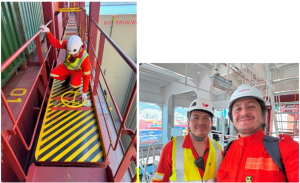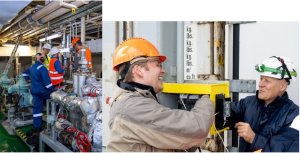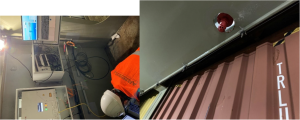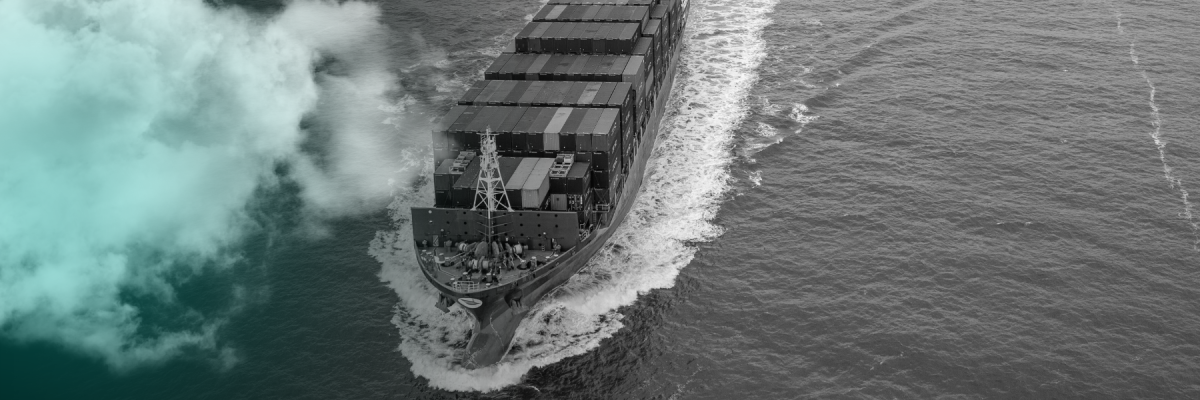Minutes Matter: Transforming Fire Detection on Container Ships
18/06/2025Inside the CFLII initiative advancing maritime safety through cutting-edge sensors, AI-driven analytics, and real-world trials — delivering faster, smarter fire detection at sea.
Fires on container ships remain one of the most serious risks to global shipping—leading to tragic loss of life, destruction of cargo, and environmental harm. In response, a coalition of leading shipowners and insurers—including Maersk, Evergreen, ONE, Offenship, Seaspan, and CMES, with UK P&I and Lloyd’s Register—came together under the Cargo Fires and Loss Innovation Initiative (CFLII) to explore how emerging technologies could improve early fire detection at sea.
Led by Safetytech Accelerator, the initiative is focused on practical, scalable solutions that work in real-world maritime conditions—not just theoretical improvements. Now two years in, the results are clear: new detection technologies can outperform traditional systems by a significant margin, enabling earlier alerts and better situational awareness for crews.
Traditional systems rely on smoke being drawn through pipes to a central sensor—a process that can take 30 to 40 minutes, and in some smouldering fire scenarios, up to 12 hours. That delay can be critical. Fires that go undetected for just a short time can spread across multiple containers or even lead to explosions, reducing options for crew response.
To test alternatives, the programme has focused on three common fire types observed at sea:
- Fast-growing fires — such as those caused by lithium-ion batteries or flammable packaging
- Slow-developing fires — from materials like charcoal or cardboard
- Explosion-induced fires — involving cargo like calcium hypochlorite or peroxides
Each presents different challenges. But all require detection capabilities that are significantly faster and more accurate than current norms.
What We’ve Been Testing — and Why It Matters
CFLII has become a focal point for cutting-edge early fire detection technologies, with live trials taking place across a range of sensor types and deployment models. The goal: to move beyond the limitations of traditional smoke detection systems and identify fires — or explosion risks — faster and more reliably, across all fire types.
Several of the most promising technologies have come from outside the maritime world, adapted from fields like forestry, telecoms, and materials science. Through structured trials, we’ve supported the development and evaluation of:
- Multi-gas and particulate “Fire IoT” sensors
Originally developed for forest fire detection, these in-hold sensors monitor gases like CO and VOCs alongside particulates — offering significantly earlier warnings, sometimes up to 49% faster for fast-growing fires, and strong performance across all fire scenarios.

- Radio wave disruption analytics using AI
A highly novel approach that uses shifts in radio wave patterns to detect combustion signatures. Early results are promising, with potential to detect fires in under 30 seconds — and to provide meaningful early warning ahead of explosive events.

- Nanotechnology “e-nose” systems
Still in early-stage R&D, these use advanced chemical sensing arrays to identify fire-related compounds before smoke or heat is visible. They may offer a new way to detect smouldering fires or hazardous cargo reactions.

- Fibre optic heat detection
These cable-based systems can monitor temperature changes across container bays. While installation challenges remain, they’ve shown potential for certain fire types, particularly when integrated into structural monitoring systems.

What’s Next: Comparative testing, augmenting the existing systems and major rollouts
Building on these promising results, CFLII is now entering a new phase of large-scale comparative trials. These tests are designed to generate robust, directly comparable data across sensor types — including side-by-side evaluations of temperature-based systems versus gas and particulate sensors in realistic fire scenarios.
We’re also exploring how new technologies can enhance — rather than replace — existing infrastructure. One focus area is the augmentation of traditional smoke sampling systems with advanced sensor arrays, improving sensitivity and dramatically reducing detection time without requiring a full system overhaul.
The aim is clear: practical, scalable upgrades that meaningfully improve safety — and can be deployed in real-world shipping environments.
Voices from the Programme
“These results are the clearest signal yet that early fire detection on container ships can be drastically improved. We’re not just talking theory — we’re seeing proof of real, deployable impact. The industry is ready, and the tech is ready. Now it’s about scale and adoption.”
— Seb Corby, CFLII Programme Director, Safetytech Accelerator
“Imagine you could smell, with high accuracy, the specific odour of a Li-ion accumulator starting to heat up during the process of a thermal runaway, potentially resulting in a serious fire. Or imagine smelling fuel oil in the atmosphere of a ship’s engine room after a small crack in a high-pressure fuel pipe starts to spray fine droplets of a serious fire hazard into the air. Sounds futuristic?
Well-conducted trials we did with SmartNanotubes and duotec have proven that both scenarios are already within the reach of this relatively new technology. It doesn’t take much imagination to conclude that the number of use cases is only limited by the database being collected and the evolution of the software and AI screening for certain incidents. So, the e-nose will remain open to any new smells.”
— Capt. Ortwin Muehr, Head of Nautical Department, Offenship
A Call to the Industry
What CFLII proves is simple: faster fire detection is achievable. But we get there faster — and safer — by working together.
If you’re a shipping operator, insurer, regulator, or tech provider, there’s a seat at the table. Membership offers access to the full results, ongoing pilots, and the opportunity to shape what’s next.
The future of fire detection at sea is being built. You can be part of it.
The full Year Two report is available to CFLII members. If you’re not yet involved and want access — along with a voice in what happens next — reach out to learn more about joining.
To explore CFLII membership or find out more about the programme, visit: Cargo Fire and Loss Innovation Initiative (CFLII) – Safetytech Accelerator

